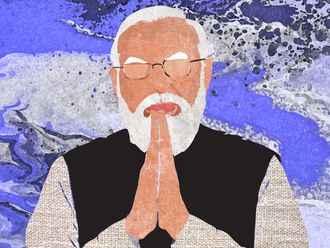Glossy magazines devoted to women's issues dwell at length on the importance of dressing appropriate for your shape. We are told we come in all shapes and sizes. And it's an added bonus if we are aware of our proportions, where we curve in and out and where it goes haywire.
I've heard of the apple and pear classification and maybe a few other fruity descriptions but I had no idea we could extend the comparison to the world of vegetables.
In a UK survey, there were actually some very knowledgeable women who could make the fine distinction between broccoli and butternut squash and then decide that they could more accurately be compared to an artichoke. They might be flummoxed if asked to cook these but they were experts in the minute details of external appearance. My question is: Should people be rated for their ability to liken two dissimilar objects even if they are not familiar with the minutiae of the objects under comparison? For example, some of these veggies are known to us by name as we have read about them in books but have no clue what they look or taste like since they are not readily available in the market. Maybe some fancy store might stack them but priced so high that even looking at them makes you feel guilty. Just reading about them isn't the same as the tactile experience.
I think the name also has a part to play in the desirability or otherwise of these. I would rather liken myself to an aubergine than a brinjal. The first sounds exotic and the latter something you would find in your backyard and not necessarily want to pluck right away. The bad news is that over the years our shape alters considerably, which calls for a reclassification from time to time. Haven't we heard ourselves say with a sigh, "I was once as slim as you." Of course, the person to whom this is addressed might feel that it is a reminder that time will ravage their slender figure just as it has ours. But we have to learn to downgrade our classification as time takes its toll. So, the apple might get bent out of shape and the butternut squash (apparently the hourglass type) find the sand running out.
Hard to please
But there's no need for us to squash hope as what we wear can minimise our shortcomings and accentuate our best features. For example, we are told vertical lines can make a petite person seem taller. But what does one do if one is allergic to geometrical shapes?
We are told to draw attention to redeeming features but these are hard for some of us to find. Perhaps we are too critical of ourselves and tend to exaggerate our drawbacks. Sometimes even as we wryly note to a friend that the weight doesn't seem to be coming off however hard we try, we wait for a rebuttal of this fact. However, when the expected support is expressed, we tend to dismiss it as a misplaced sense of loyalty. We are hard to please.
When we realise that it's impossible to redefine our shape, we fall back on the universal excuse: "My mother and grandmother have the same bone structure." In other words, the situation is beyond redemption. We console ourselves with the thought that we're stuck with what we were born with. No amount of exercise or dieting will help. So, we tell ourselves that we might as well indulge the sweet tooth and let the calories settle where they will. We know when we're fighting a losing battle. Valour lies in acknowledging the fact that we're beaten despite stinting on eating.











